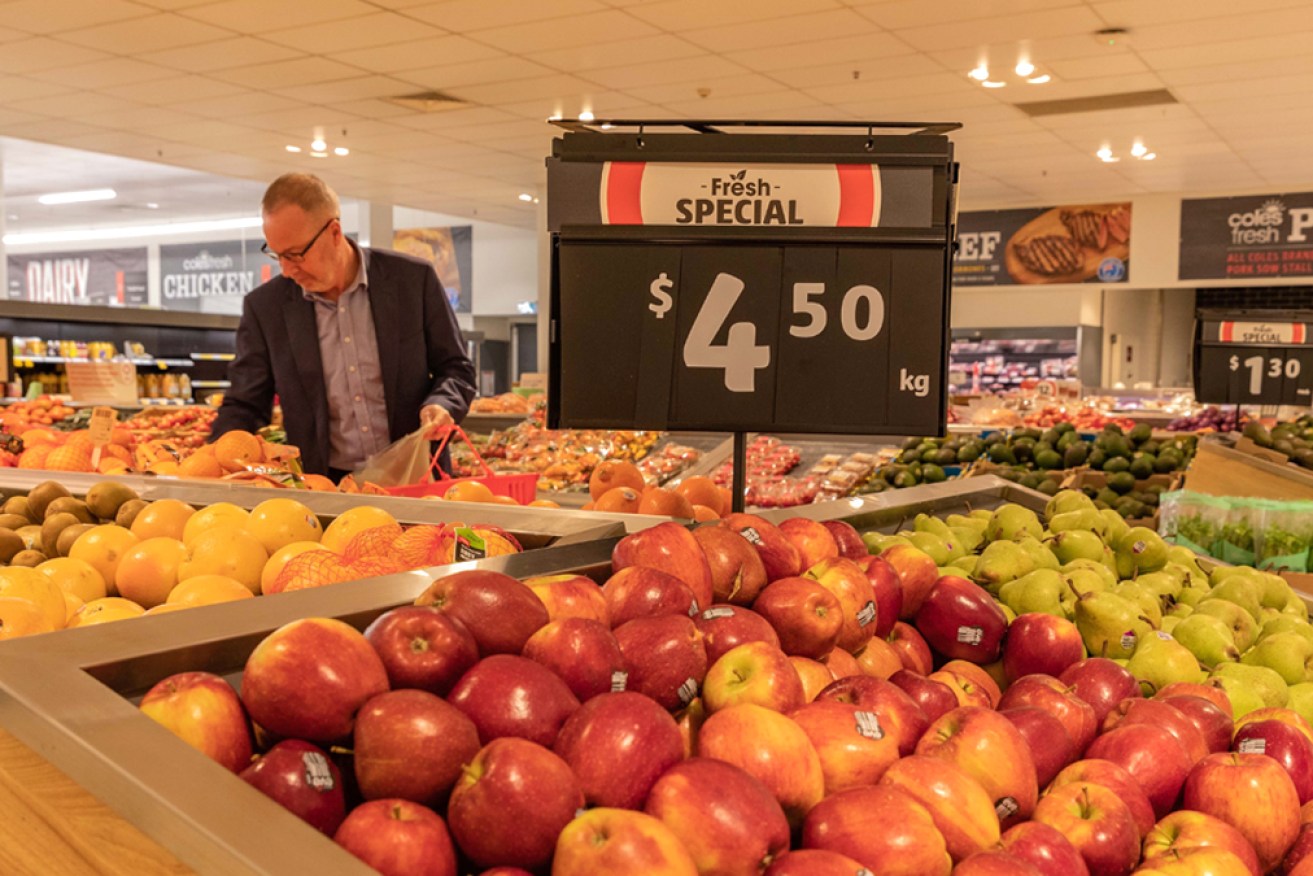Inflation data ‘unacceptably high’: Jim Chalmers


Australia has recorded its highest rate of inflation in more than 30 years. Photo: AAP
Soaring prices for fruit, vegetables and dairy goods have combined with a sharp spike in electricity bills and higher holiday costs to deliver the fastest annual inflation rate since 1990 over the December quarter.
Australian Bureau of Statistics figures published on Wednesday revealed the annual Consumer Price Index was up 7.8 per cent heading into 2023, up from 7.3 per cent over the September quarter.
The cost-of-living squeeze is being felt acutely at supermarkets and in utility bills, while prices for local and international holidays also soared.
Electricity prices rose 8.6 per cent annually amid a massive increase in costs for key inputs like gas and coal, while catastrophic flooding across much of Australia helped push food and drink prices up by 9.2 per cent.
Treasurer Jim Chalmers said the biggest jumps in the annual inflation rate were in the first quarter of 2022, rather than in the December quarter.
“[But] this is very high inflation by historical standards. There’s no use pretending otherwise. It’s unacceptably high,” he said on Wednesday.
“Now, this is likely the peak in inflation. But we won’t know that for sure, until we get the numbers for this March quarter that we’re in now.”
Dr Chalmers said the figures were in line with Treasury forecasts, and “almost as high” as Reserve Bank predictions. But he said inflation remained “a defining challenge in our economy in 2023”.
“Our expectation and our hope is that inflation has now peaked but it will still be higher than we would like for longer than we’d like, even on the other side of the peak in inflation,” he said.
“Even as inflation moderates, the pressures coming at us from around the world will continue to be felt around the kitchen tables of our country.”
ABS’ head of prices statistics Michelle Marquardt said the final three months of 2022 were the fourth straight quarter where inflation was faster than the price spike recorded when the GST was introduced in 2000.
“The increase for the quarter was slightly higher than the quarterly movements for the September and June quarters last year (both 1.8 per cent),” she said in a statement on Wednesday.
Dr Chalmers said there were promising signs in some areas, including energy bills.
“It will take a little bit of time for our interventions in the energy market to flow through. And there’s obviously a long way to go,” he said.
“But we are really quite pleased and quite encouraged to see some early evidence that our energy plan will moderate some of these energy price increases that we expected in 2023.”
Price squeeze hits supermarkets, holidaymakers
Inflation over the December quarter was felt most acutely by tourists, with prices for domestic travel and accomodation spiking 13.3 per cent in annual terms and the cost of international holidays up 7.6 per cent.
Those increases pushed inflation for discretionary goods to 7.1 per cent in annual terms, much higher than the 5.5 per cent in the prior quarter.
But it was the soaring cost for essentials that continued to drive the cost of living crisis, with non-discretionary inflation remaining at 8.4 per cent.
Fruit and vegetable prices rose 8.5 per cent in annual terms, however in quarterly terms prices were 7.3 per cent lower, reflecting a recovery from floods across Australia’s eastern coast during 2022.
Prices for dairy goods like cheese and milk skyrocketed 14.9 per cent.
Electricity prices rose 8.6 per cent in annual terms in the quarter as the affects of earlier power bill subsidies from state governments unwound, exposing families to the brunt of near record prices for coal and gas.
Inflation peak
Economists had expected annual inflation would rise 7.5 per cent for the quarter, which was slated to represent a peak in the pace of price rises amid efforts from the Reserve Bank to contain inflation with higher rates.
The RBA hiked interest rates 3 percentage points last year in a bid to curb fast rising prices, but the full affects of the moves are yet to be felt.
Underlying (trimmed mean) inflation – a measure watched closely by the RBA because it strips out the most volatile price changes – rose 6.9 per cent annually over the December quarter, up from 6.1 per cent.
Those figures are more than double the RBA’s medium term inflation goal, which aims to target an inflation rate between 2 and 3 per cent.
But BIS Oxford senior economist Sean Langcake said the December inflation figures were actually a “little softer” than the RBA had predicted.
“While this is expected to be the peak in inflation in this cycle, the RBA’s hawkish communications lead us to expect another rate rise in February, with another increase likely to follow in March,” he said in a statement.








